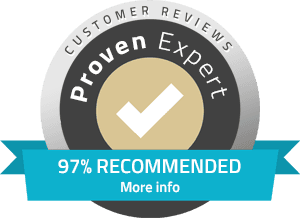On-page SEO and off-page SEO are two critical components of search engine optimization that work together to improve a website’s visibility and ranking on search engine results pages (SERPs). Here’s a detailed explanation of each:
On-Page SEO
On-page SEO refers to the optimization techniques you apply directly on your website to improve its search engine ranking. It involves making your site more understandable and accessible to both users and search engines. Key aspects of on-page SEO include:
Content Quality:
Relevant Content: Ensure your content is relevant to the keywords you’re targeting and provides value to your audience.
Engaging Format: Use headings, bullet points, images, and videos to make the content more engaging.
Keyword Optimization:
Title Tags: Include primary keywords in your title tags, making them compelling and descriptive.
Headings: Use H1, H2, and other headings to structure your content and include relevant keywords.
Meta Descriptions: Write concise, keyword-rich meta descriptions that summarize your page content.
Content: Naturally integrate keywords throughout the body text, but avoid keyword stuffing.
URL Structure:
Clean URLs: Use simple, descriptive URLs that include keywords.
Readable URLs: Ensure URLs are easy to read and understand by users and search engines.
Internal Linking:
Link to Other Pages: Use internal links to guide users to related content within your site and improve navigation.
Anchor Text: When appropriate, use keyword-rich, descriptive anchor text.
Image Optimization:
Alt Text: Include descriptive alt text for images to help search engines understand the content.
File Names: Use keyword-rich file names for images.
Compression: To speed up page loads, reduce the size of images.
User Experience (UX):
Mobile-Friendliness: Make sure your website is responsive and offers a positive user experience on mobile devices to make it mobile-friendly.
Page Speed: Optimize page load times to enhance user experience and improve rankings.
Navigation: Establish an easy-to-understand navigation framework.
Technical SEO:
Site Architecture: Use a logical site structure and include a sitemap.
HTTPS: Secure your site with HTTPS.
Schema Markup: Implement structured data to help search engines understand your content.
Off-Page SEO
Off-page SEO refers to the actions taken outside your website to influence its ranking on SERPs. It involves building a website’s reputation and authority through various external means. Key aspects of off-page SEO include:
Backlinks:
Quality Links: Acquire high-quality backlinks from reputable websites.
Natural Links: Focus on earning natural, editorially given links rather than buying links.
Anchor Text: Optimize the anchor text of backlinks to include relevant keywords.
Social Signals:
Social Media Engagement: Promote your content on social media platforms to drive traffic and increase engagement.
Shares and Likes: Encourage social sharing to increase your content’s reach.
Guest Blogging:
Write for Other Sites: Publish guest posts on reputable websites to build authority and gain backlinks.
Content Contributions: Contribute valuable content to other platforms.
Influencer Outreach:
Collaborate with Influencers: Partner with influencers in your industry to promote your content and increase its reach.
Mentions and Shares: Seek mentions and shares from influential figures.
Brand Mentions:
Online Mentions: Gain mentions from authoritative websites, even if they don’t include a link, as they can still positively impact your SEO.
Reputation Management: Manage and monitor your online reputation.
Local SEO:
Google My Business: Optimize your Google My Business listing for local searches.
Local Citations: Ensure your business information is consistent across all local directories.
Reviews: Encourage and manage customer reviews on platforms like Google and Yelp.
Content Marketing:
Create Shareable Content: Develop high-quality, shareable content like infographics, videos, and research reports.
Content Distribution: Distribute your content on various platforms to reach a broader audience.



